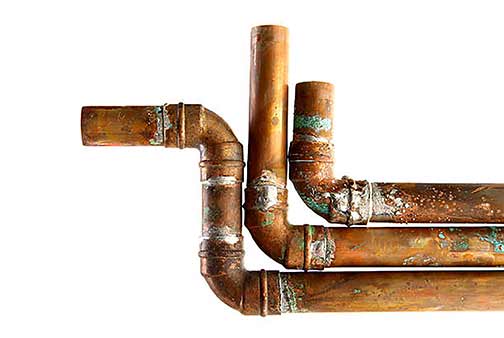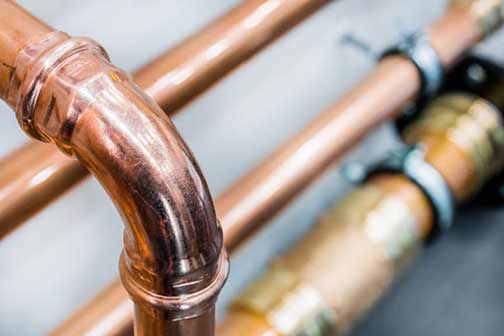
As homeowners, one of the most critical systems in your house that needs careful observation and maintenance at all times is the plumbing system. Over time, as your home ages, so does its plumbing system. Pipes, fixtures, and related components gradually succumb to deterioration and corrosion, resulting in all kinds of issues that can hinder the performance, safety, and efficiency of your home.
Recognizing these problems at an early stage and being aware of the most effective methods of resolving them are the critical steps to ensuring your plumbing to be reliable and efficient in the long term. This guide is meant to deal thoroughly with the common problems with older pipes, signs of something amiss, and the most effective ways to resolve and prevent these problems, and consequently assist you to enjoy a safe, healthy, and inexpensive domestic environment.
The Importance of Recognizing the Signs of Aging Plumbing
It is important to detect the symptoms early of plumbing problems founded on aging plumbing in a bid to prevent extensive damage and costly repairs. Homeowners tend to overlook minor signs of sinks that drain slowly or small leaks and treat them as temporary complications. However, such seemingly insignificant signs may be symptoms of much more serious underlying problems that require early attention.
For instance, constant leaks can lead to structural harm, mold, and increased water bills, while low water pressure can be an indication of pipe corrosion or blockages. Discolored water, strange noises from pipes, and frequent clogs are other definite signs of aging plumbing systems deteriorating. Being aware of these signs and taking quick action can really add many years to the life of your plumbing system, protect the structural integrity of your home, and keep your household members safe and comfortable.
Common Issues with Aging Plumbing Systems
Corrosion and Rusting: Gradual Ruin of Metal Pipes
One of the most prevalent and damaging issues of aged pipes, especially metal pipes such as galvanized steel, cast iron, and copper, is corrosion. Years of constant exposure to water, oxygen, and other chemicals erode the metal, resulting in rusting. Rust not only brittles pipe walls, making pipes leak, crack, or catastrophically burst, but also contaminates the water supply, resulting in discoloration, dirty taste, and order.
Detection of corrosion in its early stages involves looking for reddish-brown discoloration around pipe fittings, fixtures, and drains, as well as changes in water quality. If left unchecked, corrosion will cause the overall plumbing system to deteriorate, requiring costly repairs or replacement. Preventive measures such as installing corrosion-resistant pipe materials and regular checking of the system can reduce this issue quite significantly.
Leaking Fittings and Pipes: The Inevitable Drip That May Do Irreparable Harm
Leaks in pipes rank among the most prevalent and annoying issues related to old plumbing. Leaks usually stem from joints, fittings, or weakened points through wear and tear over time. If left unchecked, leaks can develop into serious water damage, mold, and structural damage. Dripping pipes also leave behind evidence in the form of wet or discolored walls, ceilings, or floors, and the dripping sound of flowing water even when no fixture is running.
The consequences reach beyond lost water and increased utility bills; repeated leaks can weaken your house’s foundation as well as promote the growth of poisonous mold spores. Periodic checks, quick repairs, and filling minor leaks must be done to prevent such issues running out of control to costly repair and large-scale damage to property.
Clogged Drains and Sewer Line Problems: Obstructions That Disrupt Daily Life
Over time, the accumulation of debris, grease, soap scum, mineral deposits, and other materials within pipes will result in slow draining or obstruct complete flow. Older pipes, especially those made of clay, cast iron, or older plastics, are more prone to these issues due to the porous nature of their surfaces and the likelihood of corrosion. Sewer line problems, such as tree root entry, pipe collapse, or blockages due to accumulated debris, will cause backups, odors, and even sewage overflows.
These problems are detected by searching for symptoms such as slow-draining fixtures, gurgling drains, or sewage backup in sinks and toilets. Professional inspections, such as camera diagnostics, are usually required to identify the precise location and cause of blockages, allowing for focused repairs and preventing future downtime.
Low Water Pressure: A Sign of Internal Plumbing Deterioration
Low water pressure is among the most common homeowner complaints about older plumbing systems. Low water pressure might be due to mineral buildup within pipes, corrosion, leaks, or worn-out fixtures. Low water pressure disrupts everyday routine such as bathing, cooking, and cleaning and could be a sign of more complicated internal problems.
In order to identify the source, one has to test a number of fixtures for equal pressure drops, inspect for leaks, and examine pipe and fixture condition. Low pressure water can be cured by descaling mineral deposits, reconditioning or replacing corroded fixtures, or leak repair to ensure maximum flow in your home.
Discolored or Odor-Impacted Water: Internal Corrosion or Contamination Symptoms
Color or smell changes in water are often signs of corrosion, bacterial development, or sewer line issues in the plumbing system. Rusty-looking water is often a sign of rust buildup inside the pipes, and unpleasant odors may be a sign of bacterial contamination or sewer line issues. These issues are health risks and must be rectified at once.
Solutions require replacing corroded pipes, properly cleaning and disinfecting the system, and adding water treatment systems or filters to enhance water quality. Maintenance and water testing performed regularly can detect these issues early so your home gets safe, clean water all the time.

Sound Solutions to Aging Plumbing Problems
Pipe Replacement and Upgrades: Modernizing Your Plumbing System
To replace pipes when they become highly corroded, cracked, or otherwise deteriorated is often the best long-term option. Today’s plumbing materials such as cross-linked polyethylene (PEX) and copper tubing are more resistant to corrosion, more flexible, and long-lasting than old-fashioned materials like galvanized steel or cast iron. Replacing your plumbing pipes not only improves water quality and pressure but also reduces the frequency of repairs and maintenance.
While pipe replacement is inconvenient and requires thorough planning, it is a definite, long-lasting solution that can extend your plumbing system’s lifespan by decades. Trained plumbers can help develop a replacement plan tailored to your residence’s requirements with minimal inconvenience in the process.
Leak Sealing and Repair: Preventing Leaks from Becoming a Major Issue
Listening to the warning of a leak is the key to preventing expensive water damage and structural issues. Small leaks may be simply repaired with sealants, fittings, or clamps on the pipes, whereas significant leaks may mean the replacement or re-routing of the pipes. Trained plumbers utilize the latest equipment and techniques, such as pipe relining or epoxy injection, to offer a permanent, efficient repair.
Routine care, for example, checking for first signs of leaks and having such leaks immediately repaired, will conserve water, reduce utility costs, and preserve your home’s foundation from water damage.
Drain Cleaning and Sewer Line Maintenance: Keeping the Flow Clear
Routine drain cleaning with rodding machines, professional hydro jetting, or chemical treatment is a great way to dislodge sediment and clog prevention. Sewer line issues are well worth their weight in gold in terms of locating intrusions, collapse, or severe clogging via camera inspections.
Replacement of the sewer line is the solution when pipes are substantially compromised. Keeping your plumbing system running as it should, eliminating stinky smells, and preventing costly emergency repairs due to sewer backup or pipe failure requires routine maintenance.
Solving Low Water Pressure: Restoring Comfort and Convenience
Certain remedies include descaling pipes to remove mineral deposit, new or repairing damaged fixtures, and sealing leaks that lower water pressure. Installing pressure-boosting equipment can also enhance water pressure, especially in older or smaller pipe houses.
These measures restore your plumbing system’s performance, making everyday activities more comfortable and removing frustration over low water flow.
Water Quality Improvement: Clear and Safe Water
Installation of water softeners, filters, or whole-house treatment systems can significantly improve the clarity, taste, and odor of water. For dirty or colored water, new rusty pipes replaced with proper disinfection and filtration make the water supply safe to use in the house.
Filtration and treatment system maintenance is needed in order to ensure water quality in the long term, keeping your family’s health and well-being intact.
Preventative Measures to Assist in Extending Plumbing System Life
Preventive maintenance before trouble happens is the key to a long-plumbing system life. Regular inspection by licensed plumbers is able to identify corrosion, leaks, or buildup before they become issues, enabling timely intervention. Once a year, flushing water heaters prevents sediment accumulation, and avoiding pouring grease and potent chemicals down drains minimizes buildup and corrosion.
Installing water softeners in hard water areas reduces mineral deposits, and insulating exposed pipes during winter will stop freezing and bursting. These preventative steps not only extend the lifespan of your plumbing but also allow you to avoid emergency repairs and costly replacements, rendering your home safe, functional, and efficient.
The Role of Professional Plumbing Services
While minor repairs and maintenance can often be done by home owners, complex issues such as pipe replacement, sewer line repair, or comprehensive system checks require the expertise of licensed professional plumbers. They possess the training, tools, and experience to accurately diagnose problems and implement effective and lasting remedies.
Investing in regular professional maintenance not only lengthens the life of your plumbing system but also provides you with peace of mind, with the assurance that your home’s plumbing is under the care of the professionals. Their professional expertise ensures repairs are done correctly the first time, reducing the likelihood of future problems and keeping you safe, efficient, and reliable in your plumbing infrastructure for years to come.
Conclusion: A Healthy Plumbing System for the Future
Making sense of the intricacies of aging plumbing systems helps homeowners become proactive in sustaining their homes. Identifying warning signs of deterioration, fixing issues immediately, and applying preventive care can go a long way to lengthening the lifespan of your plumbing system. Regular inspections, timely repairs, and maintenance, along with the expertise of professional plumbers, constitute a strong plumbing system that enhances the health, safety, and convenience of your home.
Remember, vigilance, timely action, and regular upkeep of your plumbing system are the keys to avoiding costly repairs, preventing loss of property, and saving the value of your home. By remaining in the loop and being active, you can have the luxury and peace of mind of a well-serviced, efficient plumbing system for years to come.

